|
My last
day of the trip, I was determined to get some shots of a few of the signature birds of the area that had thus far eluded me
I took the same motorbike rickshaw I had taken earlier in the week; arriving at the high-point of the road just
after first light.
A female Chestnut-bellied Rock Thrush was my first photo opportunity of the day, albeit a distant
one. But not nearly as distant as the small woodpecker I photographed next. So distant, I really didn't know what it was.
I couldn't see any obvious breast-striping and it somehow reminded me of pictures I had seen of Fulvous-breasted, which I
understand has never been seen in Yunnan. Then again, I had never seen Stripe-breasted, but had fully expected even the female
of that species to have what it says on the can... ie prominent breast-stripes.
[The bird - photo below - is in
fact a female Stripe-breasted as its shoulders are black, not white-speckled and its black malar stripe is generously proportioned
- not that I was able to work this out for myself!]
I spent the next three hours in a clearing, where there was
an abundance of seeding bushes that attracted many different species. A Coral-billed Scimitar Babbler was an exciting find,
although the light was not good enough to do it justice.
Then came a flock of Rippon's Liocichla, which were annoyingly
difficult to get photos of. But perseverance paid off in the end (well, sort of). The next in the queue was a small group
of Whiskered Yuhina; followed by several Grey Sibia. As soon as I saw this species, I was on alert for the much-rarer Rufous-backed
Sibia (a bird I had photographed a few days before, without realising it at the time). I didn't have to wait long, before
this gloriously-patterned sibia appeared from nowhere, and I was able to watch it for a few minutes and get a "not that
bad" shot of it - my 5th Sibia species of the trip.
By now, the sun was shining brightly and I was able to
enjoy the excellent conditions for photography. Seeing a Flavescent Bulbul is always a pleasure, but in this wonderful light
it's easy to see why this area's subspecies vividus was so named.
And, finally, after getting poor shots
of the species every day for the past few days I was able to get a reasonable photo of the delightful Silver-eared Mesia.
Even a Blue-winged Minla paused long enough for a photo.
But I still had not seen (or so I had thought) Stripe-breasted
Woodpecker. This is one of the two woodpecker "specialities" of this area that had eluded me despite spending some
18 days in the field here, over three trips.
With time slipping away, I walked down the mountain road with woodpeckers
firmly in mind. A soft tapping coming from the direction of a dead tree attracted my attention. Third time lucky! There it
was, a male Stripe-breasted, in good light, at a reasonable distance. I enjoyed the bird through my bins for a while. Just
as well, because as soon as I touched my camera, the bird decided that he would rather be elsewhere.
Mrs Wang (one
of the best drivers in China you will remember) arrived at the meeting point on time, and took me back to my hotel where I
collected my rucksack.
On the way back, we had to pass the place where I had managed to get a poor photo of the
Coral-billed Scimitar Babbler in the morning. I thought it would be worth stopping for a while on the off chance that it was
still in the area.
As luck would have it, the Coral-billed appeared just before I was about to leave and I was
able to get a photo of this beautiful bird in glorious sunlight. Maybe I'm biased, but I really think that this species is
far classier than its "Red-billed" cousin. This is my favourite babbler (although Robert's Wren-Babbler is hot on
its heels ;-).
This was the last photo of the trip and it's a fitting end to a very enjoyable time in what is
one of my favourite birding areas in China, or anywhere for that matter.
15 species photographed today (10 species
"new" for 2010 are highlighted). Photos appear below.
171 Chestnut-bellied Rock Thrush (monotypic)
Mountain Bulbul (ssp similis)
172 Stripe-breasted Woodpecker (monotypic)
173 Whiskered Yuhina (ssp rouxi)
174 Rippon's Liocichla (nom. ssp ripponi)
Rufous-backed Sibia (nom ssp annectens)
175 Flavescent
Bulbul (ssp vividus)
176 Common Tailorbird (ssp inexpectatus)
Rusty-capped Fulvetta
Blue-throated
Barbet
177 Ashy-throated Warbler (nom. Ssp maculipennis)
Chestnut-tailed Starling
178
Blue-winged Minla (ssp wingatei)
179 Silver-eared Mesia (ssp vernayi)
180 Coral-billed Scimitar Babbler (ssp stanfordi?)
Other birds seen:
Great Barbet, few
Atherton's Bee-eater, 1
Asian Palm Swift, c30
Emerald
Dove, 1
Accipiter sp, 1 male
Little Egret, c200
Cattle Egret, c30
Maroon Oriole, 2
Black-winged Cuckooshrike,
1
Bronzed Drongo, c20
Yellow-bellied Fantail, few
Grey-headed Canary Flycatcher, few
Large Woodshrike,
1
Eugene's Whistling Thrush, 1
Chestnut-bellied Nuthatch, 1
Naga Nuthatch, 1
Grey Sibia, c20
Striated
Yuhina, c10
Red-billed Leiothrix, 1
Streaked Spiderhunter, 1
Purple Sunbird, 1 male
[NB: On
8th March, when back in Beijing, I wrote the following: had planned to go birding today, but the overnight snow that
now covers Beijing has made driving here even more dangerous than it would be normally, so I thought I'd catch up on some
reading.
I opened the Birds of China list that was kindly linked to on a different BF thread (thanks Richard).
Frustratingly, I didn't recognise more than a few of the bird names that appear on the list (as a Clements user, I'm
used to things moving at glacial speed!). The publishes of this list however seem to be up to speed with the very latest splits.
One of the splits that caught my attention is Red-faced Liocichla (sp phoenicea) and Scarlet-faced Liocichla (sp ripponi).
Clements, as I mentioned, doesn't recognise the split in the latest edition (6.4). And classifies Red-faced Liocichla
as such:
Liocichla phoenicea phoenicea
Himalayas from Nepal to Bhutan and Assam (Mishmi Hills)
Liocichla
phoenicea bakeri
S Assam (s of the Brahmaputra) to nw Myanmar and nw Yunnan
Liocichla phoenicea ripponi
E Myanmar (Kachin State to s Shan States) and nw Thailand
Liocichla phoenicea wellsi
S China (se Yunnan)
to n Laos and n Tonkin
On that basis, I assigned the birds I saw to bakeri.
The IBC, however, splits
as follows:
Scarlet-faced Liocichla (Liocichla ripponi)
Other common names: Red-faced Liocichla
Taxonomy: Trochalopterum [sic] ripponi Oates, 1900, Fort Stedman, Southern Shan State, Myanmar.
Has been treated in
expanded genus Garrulax, but placement in present genus supported by recent molecular studies. Often treated as conspecific
with L. phoenicea. Individuals of this species recorded in area from S Yunnan (China) S to E part of NW Thailand not yet assigned
to race. Two subspecies recognized.
Subspecies and Distribution:
ripponi ( Oates, 1900) - E & SE
Myanmar, adjacent S China (W & SW Yunnan) and NW Thailand.
wellsi ( La Touche, 1921) - SE China (SE Yunnan E to
NE Guangxi), N Laos and extreme N Vietnam (N Tonkin).
AND
Crimson-faced Liocichla (Liocichla
phoenicea)
Other common names: Red-faced Liocichla, Crimson-winged Laughingthrush
Taxonomy: Ianthocincla
phoenicea Gould, 1837, Nepal.
Has been treated in expanded genus Garrulax, but placement in present genus supported
by recent molecular studies. Often treated as conspecific with L. ripponi. No definite records from Nepal, despite type-locality
restriction (although “Nepal” specimens exist). Individuals at Gongshan, in NW Yunnan (China), of uncertain race,
presumed to belong with nominate. Two subspecies recognized.
Subspecies and Distribution:
phoenicea
(Gould, 1837) - Sikkim and N West Bengal E to Bhutan and NE India (Arunachal Pradesh) and adjacent N Myanmar and S China (Gongshan,
in extreme NW Yunnan).
bakeri (E. J. O. Hartert, 1908) - Meghalaya, S Assam (N Cachar), Nagaland, Manipur and Mizoram,
in NE India, N Myanmar (W & S parts) and adjacent S China (W Yunnan).
Given that I saw the birds a few
miles from northern, not eastern Burma, then this would also indicate that the birds I saw are attributable to bakeri.
But hold on a moment, what are the distinguishing characteristics of bakeri and ripponi (given that they are supposedly
different species, one would hope that there are some differences).
Robson (Birds of South-east Asia) seems to
have the answer: Forget tones of red/crimson/scarlet/whatever, the red of ripponi is shown to be more extensive and extending
to the chin.
Clearly, this is the bird I photographed. [below.]
So, to clarify, on this basis the bird
is a Scarlet-faced not Red-faced (aka Crimson-faced). Or, more sensibly, it's a Rippon's Liocichla.
As soon as we are able to convene a meeting of The BBBC, the name will be changed accordingly ;-)
As far as the
other one is concerned, I have no idea if it has actually been seen in China.
In short, I'd rather be birding than
trying to make any kind of sense of all this.
But it's still bloody snowing.
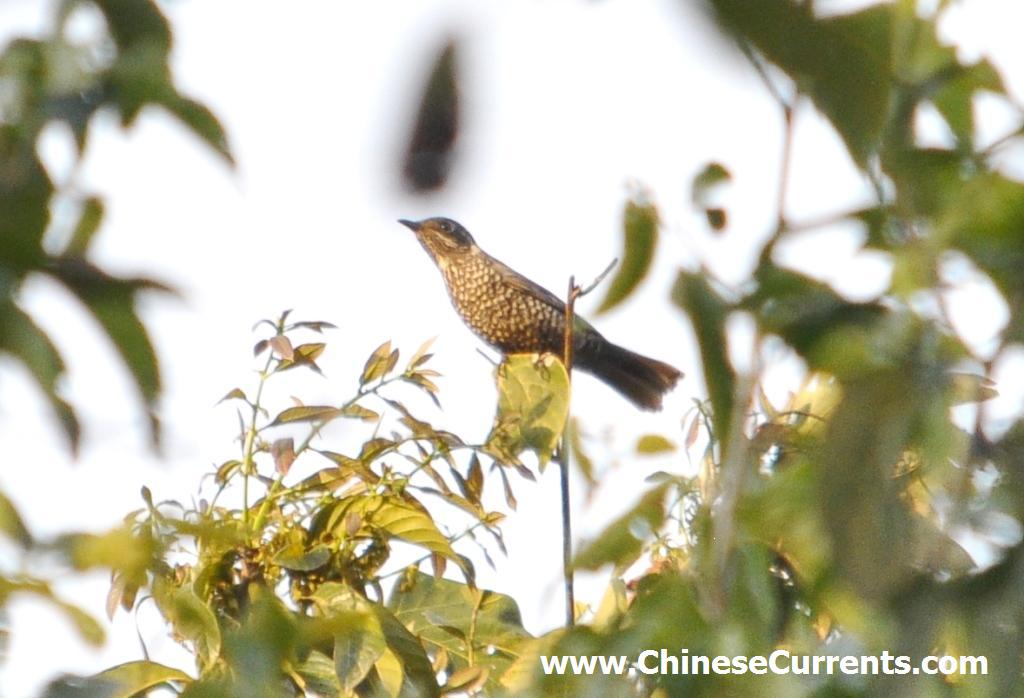

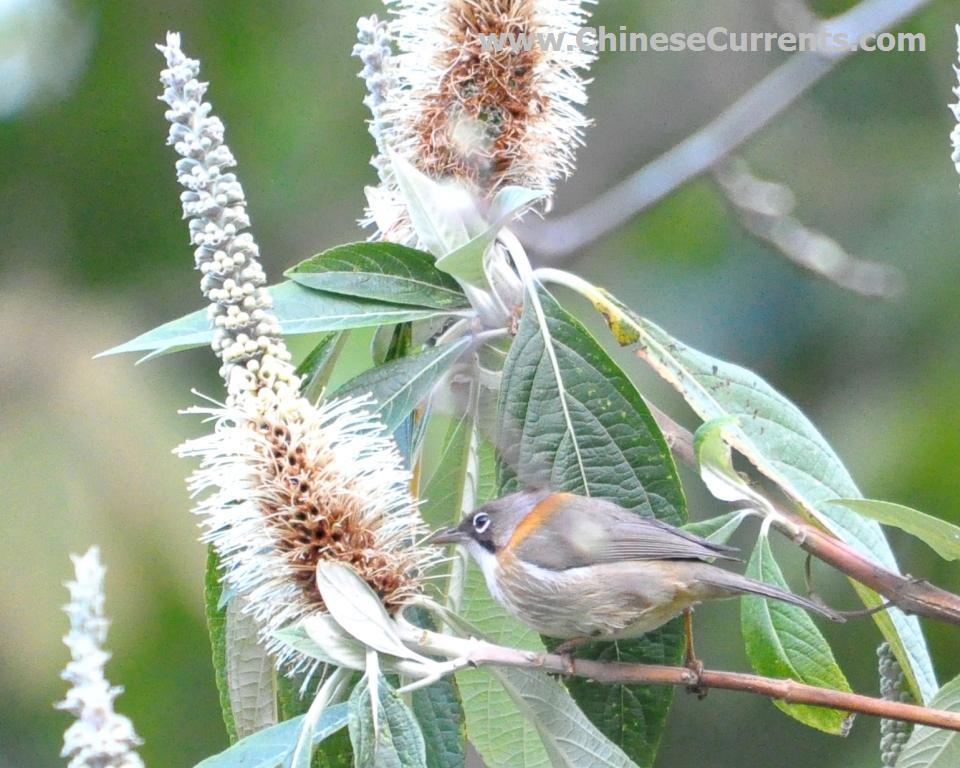
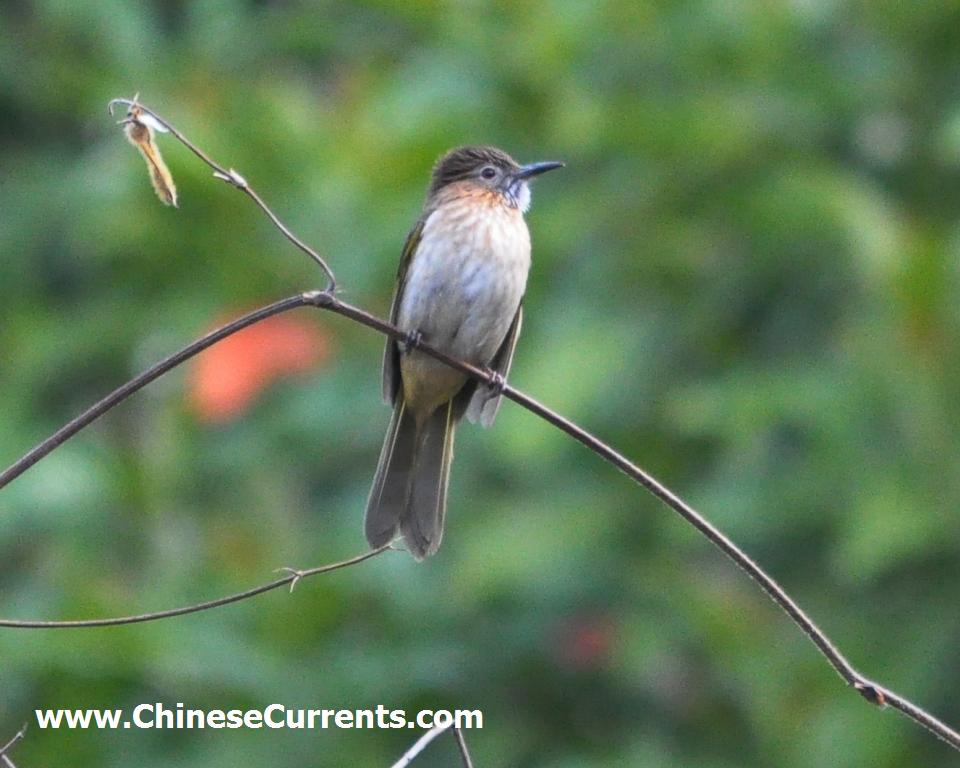
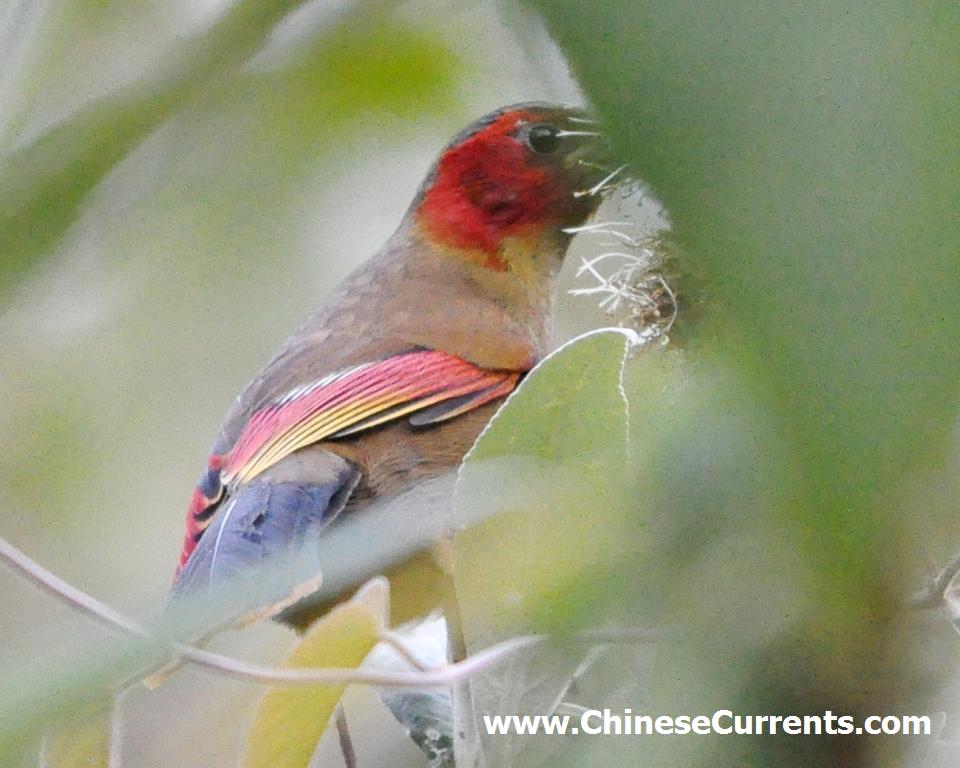
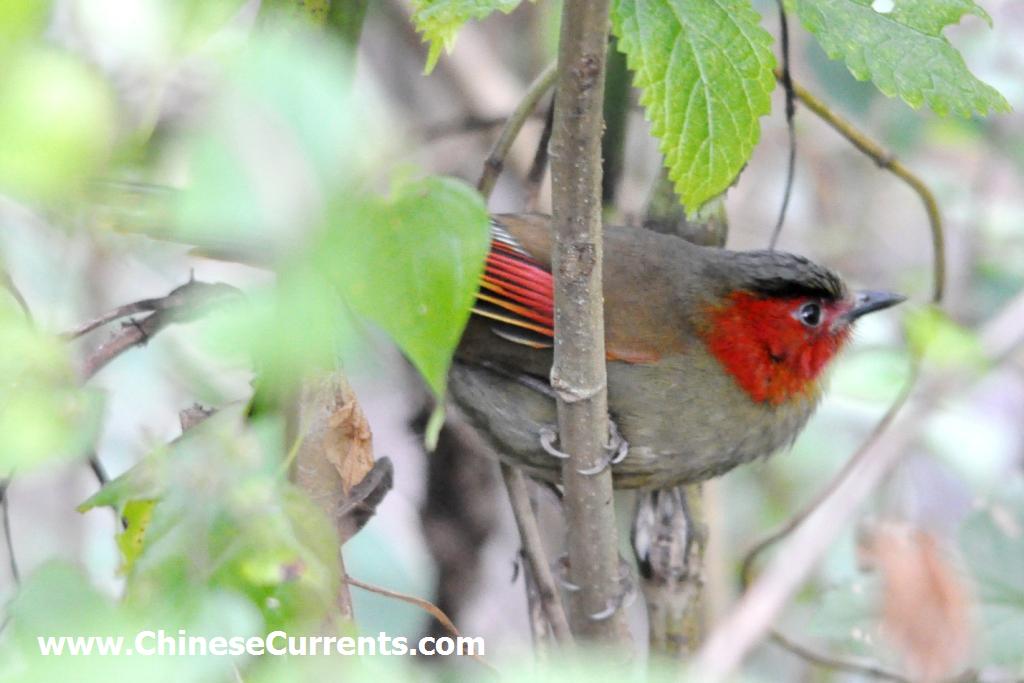

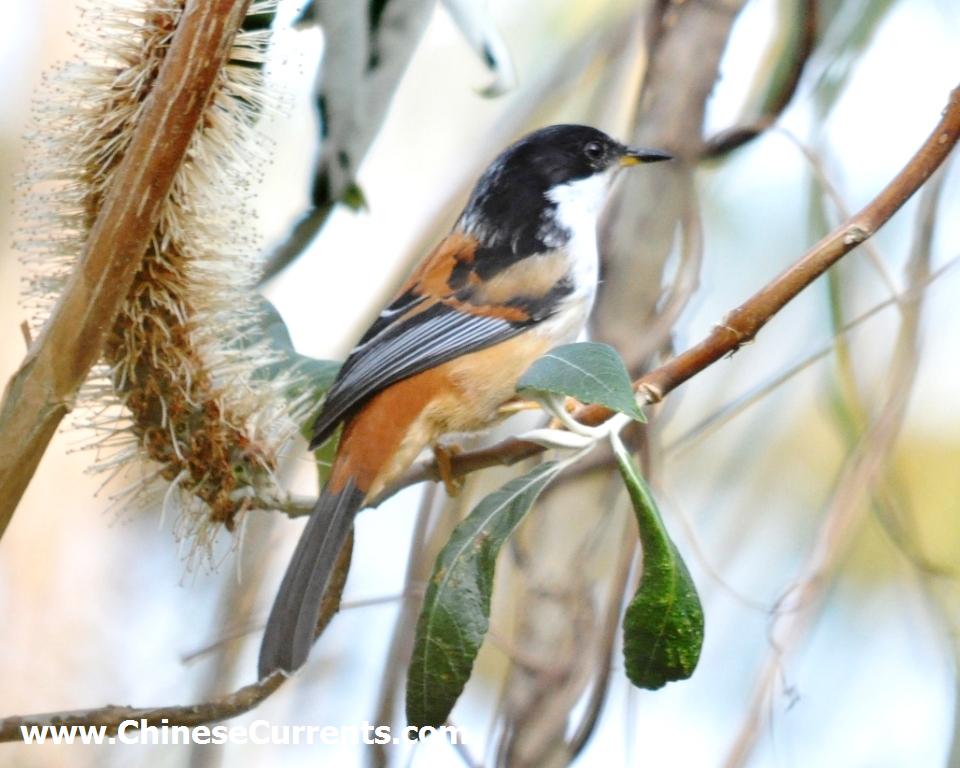
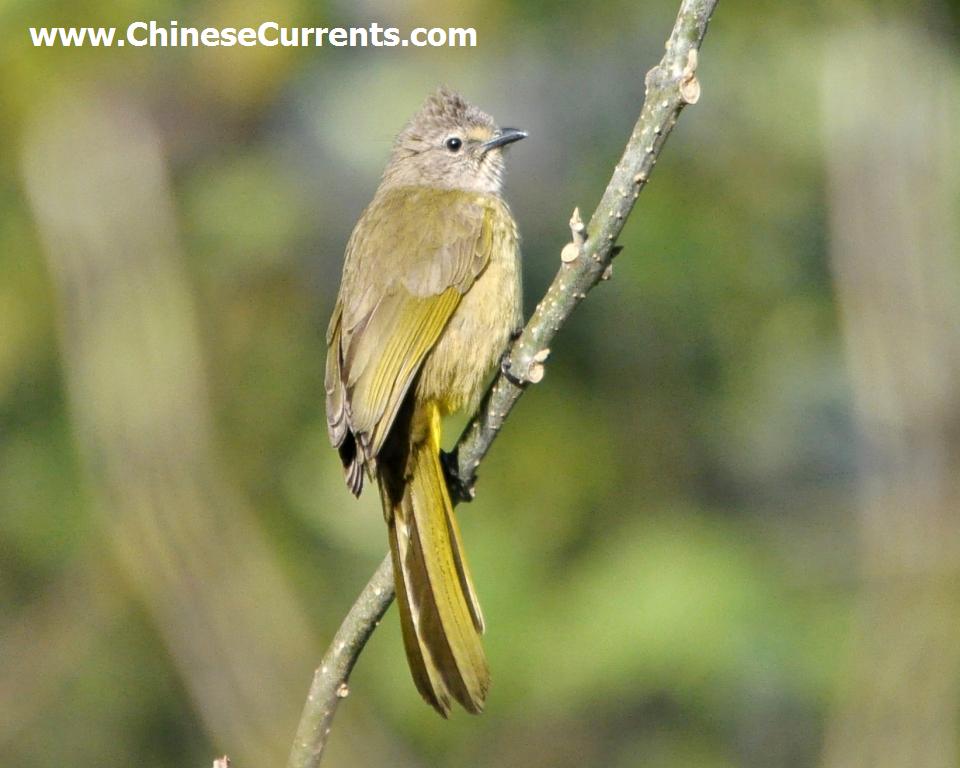
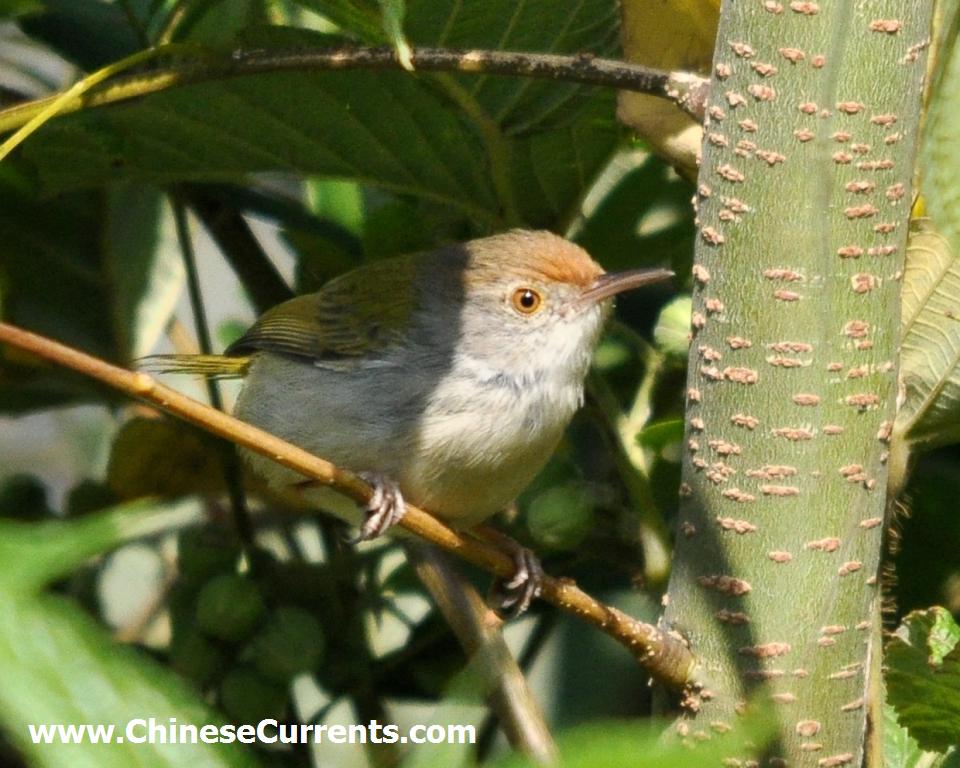
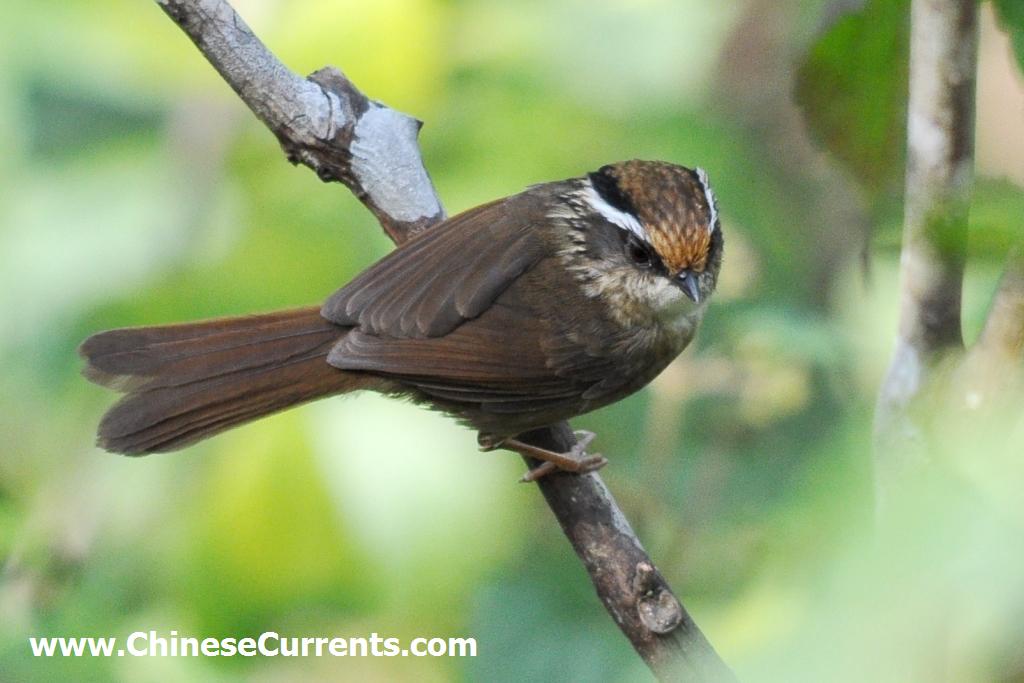
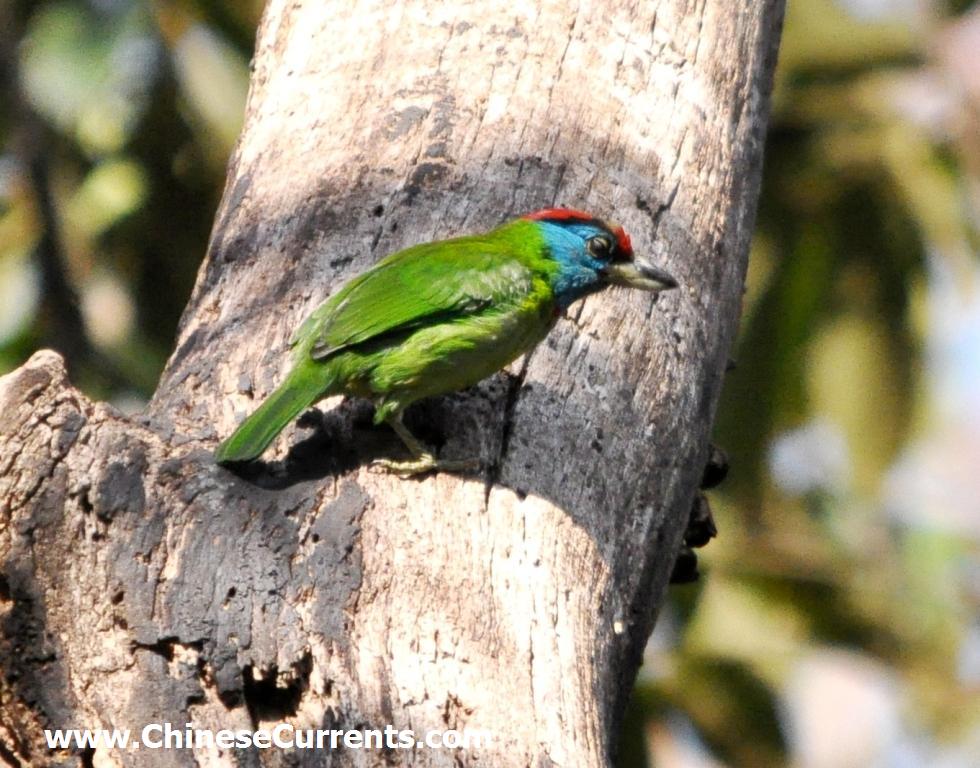
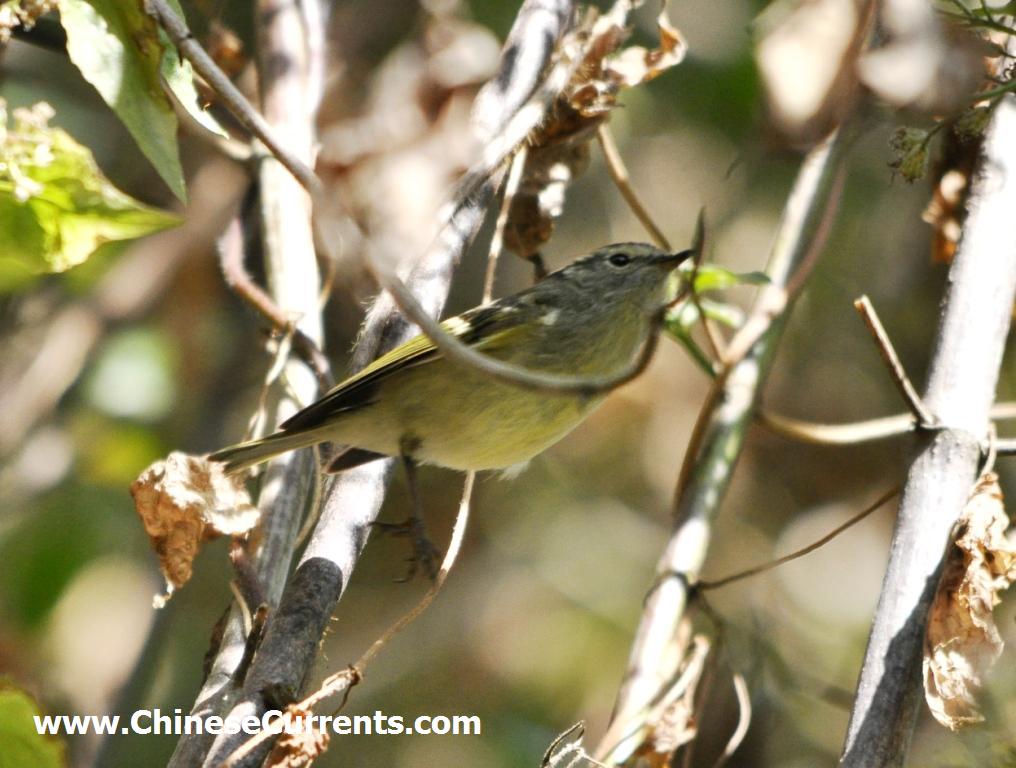

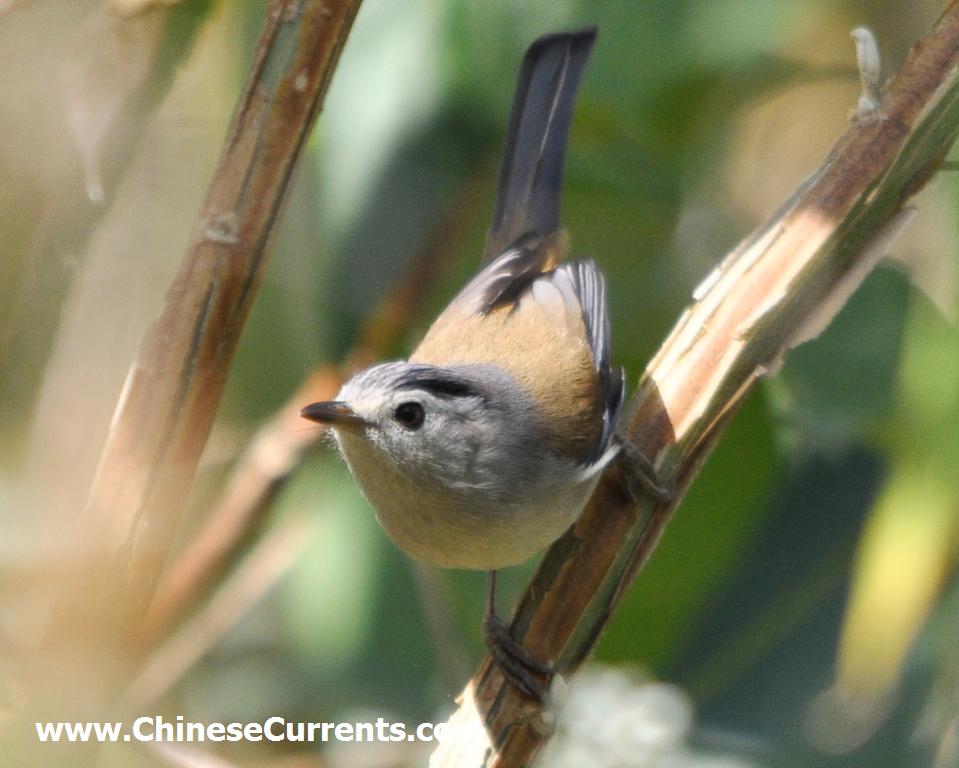

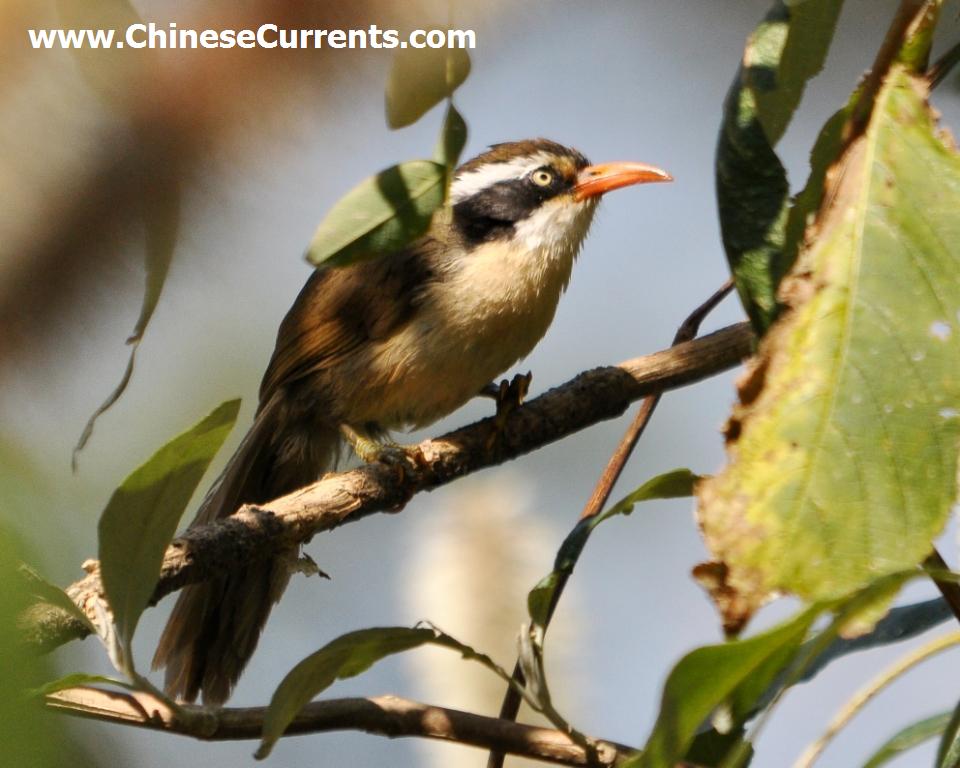
|

